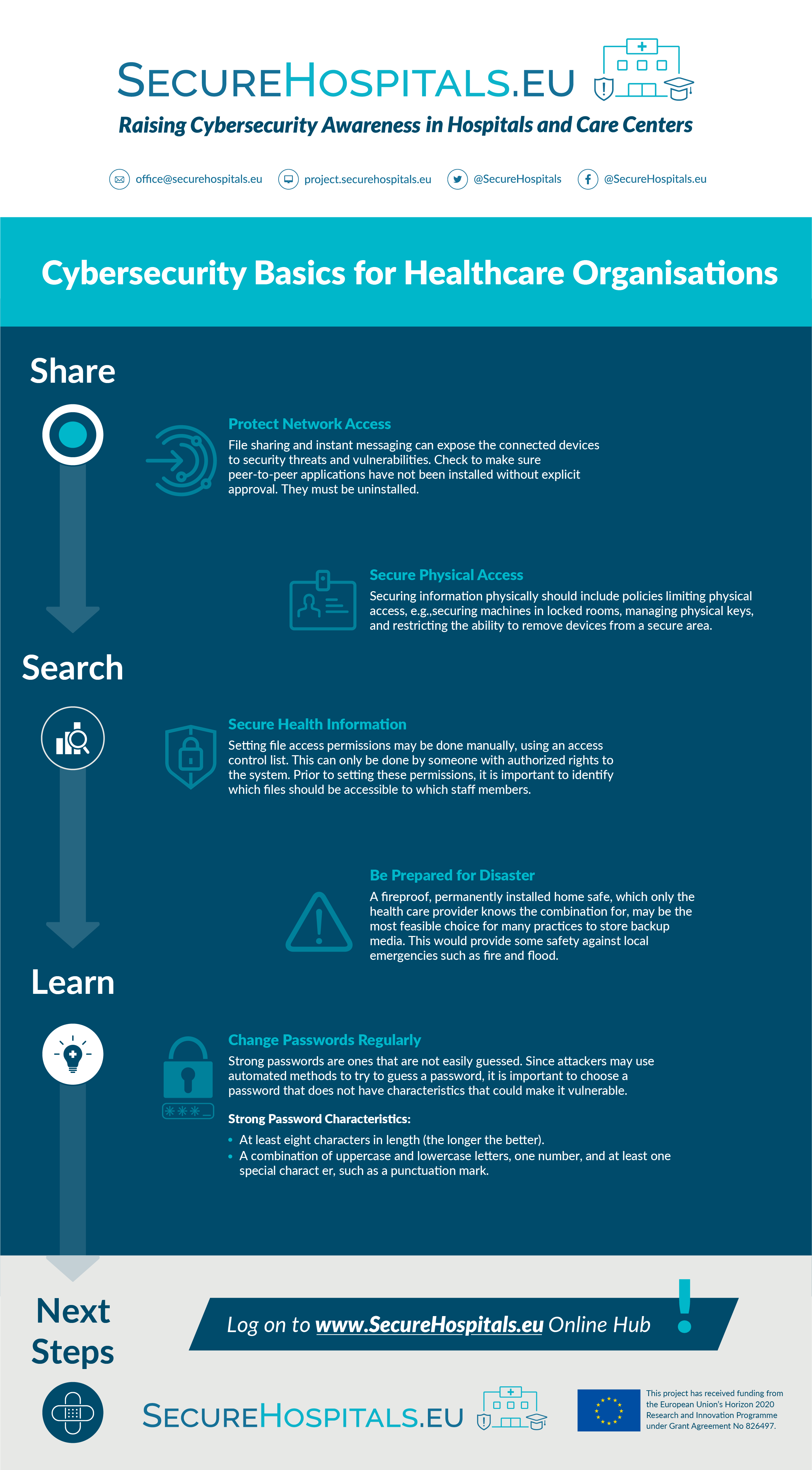Cybersecurity Basics for Healthcare Organisations
Project Network Access
File sharing and instant messaging can expose the connected devices to security threats and vulnerabilities. Check to make sure peer-topeer applications have not been installed without explicit approval. They must be uninstalled.
Security Physical Access
Securing information physically should include policies limiting physical access, e.g., securing machines in locked rooms, managing physical keys, and restricting the ability to remove devices from a secure area.
Secure Health Information
Setting file access permissions may be done manually, using an access control list. This can only be done by someone with authorized rights to the system. Prior to setting these permissions it is important to identify which files should be accessible to which staff members.
Be Prepared for Disaster
A fireproof, permanently installed home safe, which only the health care provider knows the combination for, may be the most feasible choice for many practices to store backup media. This would provide some safety against local emergencies such as fire and flood.
Change Passwords Regularly
Strong passwords are ones that are not easily guessed. Since attackers may use automated methods to try to guess a password, it is important to choose a password that does not have characteristics that could make it vulnerable.
Strong Password Characteristics:
- At least eight characters in length (the longer the better).
- A combination of uppercase and lowercase letters, one number, and at least one special character, such as punctuation mark.

